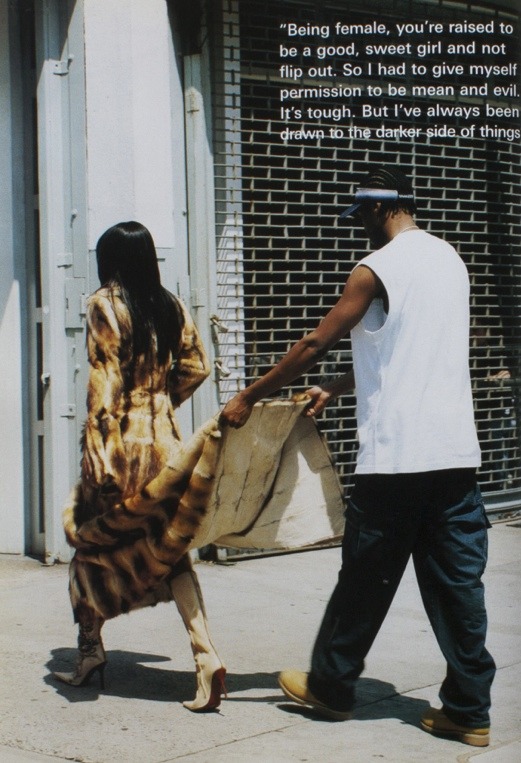The “Golden Era” of Australian TV Drama; How networking and collaboration have improved Australia’s television industry
As a perhaps overly idealistic pre-teen, ferried back and forth from drama classes to primary school productions by my encouraging mother, my over-riding aspiration in life was to make it on the silver screen. After a few years of high school, a bizarre onset of social shyness and the crushing societal pressures to pursue a “more realistic career”, I was leaning more towards actuary than actor. I lasted barely a year in a Commerce degree before I landed on Professional Communication, a degree that seems to have sneakily lead me back to my first love. While I am not sure that my heart still lies in being on-screen, I have developed an affinity with all aspects of the Australian screen industry – in particular our television drama and comedy. I would love to work within this industry one day, whether that be through writing, directing or even acting.
Perhaps my new found love for the small screen derived from the fact that just a short while ago, while flipping channels through Australia’s free-to-air and paid TV stations, the average Australian viewer’s choices seemed fairly limited. Besides Seachange or Allsaints, it seemed the best we had on offer were Neighbours or Home and Away. And yet, in just a few short years, it would seem that we are now rather spoiled for choice. Puberty Blues, Redfern Now, Wonderland, Offspring, House Husbands and Rake barely scratch the surface of what’s been on offer on Australian screens throughout the past year.
What caused this seemingly dramatic increase in quality over a short space of time? The basic principles underlying networked literacy, as outlined by Dr Adrian Miles, advocate for a need to collaborate, to change the way knowledge and content are produced, and to look heavily at the way that content is distributed and shared within its audience. These are fundamental principles that can be applied both figuratively and literally to the world of Australian television production, and that may help to indicate the ways in which Australian writers, directors and producers are finally starting to get it right.
Imogen Banks and John Edwards are a creative duo whose names have flashed across suburban television screens for many years, often accompanying Offspring’s jazzy tunes and retro graphics, or Puberty Blues’ ‘Are you old enough?’.
The two are producers who have worked together on many programs over the last ten years, including Channel 9′s Tangle and the upcoming Party Tricks for Channel 10. The two seem to have something of a midas touch, as it would appear that nearly every program bearing their name is something of a work of gold. But what really differentiates this co-producing team and the work they create, is their ability to collaborate and pull together a team of highly talented and creative individuals. This concept of collaboration through networking fits in nicely with Miles’ description of network literacy, as media creatives must cast their nets wide to uncover the most appropriate and talented individuals to contribute to their content, in the most resourceful way possible.
But the very concept of industry collaboration, represents another type of network in which producers and other industry heavyweights must become increasingly literate within. The downside of the increase in quality and quantity of Australian TV drama, is that the pool of talent becomes spread increasingly thin throughout the various programs and productions. This shows the need for forming connections within the different areas of the industry, as all sections of production and distribution become linked within a greater web or network and eventually encompassing and promoting more and more previously uncovered talent.
Puberty Blues relates to networking not only via its manner of production, but also through its conception. As written by Lev Manovich in Database as Symbolic Form, the rise of digital literacy has resulted in the database matching the narrative as the key to cultural expression in the modern age. No longer do we tell stories or express ideas through narrative or chronological order, as perhaps it was once assumed, but instead we pluck them from our own cultural databases, giant melting pots of cultural expression that have existed since the beginning of time. Channel 10’s 2012-2014 production of Puberty Blues is a product of one such melting pot or database, as it tells a story that was originally written in a 1979 novel by Gabrielle Carey and Kathy Lette, and first made for screen in the 1981 film by Bruce Beresford. And yet none of these three products are the same, each borrowing ideas and influences from one another, and each the product of different collaborations of people – actors, producers, writers, directors, editors and so forth – each adding to the story from their own cultural melting pot of experience. The basic elements of the story are both timeless and pre-existing in millions of forms – the process of growing up and the loss of innocence – and yet when combined together appear to create something entirely new and unique.
Puberty Blues Trailer (Series 1) from Glendyn Ivin on Vimeo.
Another aspect of Adrian’s quote indicates the need for increased and improved content distribution, as noted in Chris Anderson’s piece The Long Tail. With digital advancement, comes greater opportunity for content distribution, as is given with Anderson’s example of the music industry. From Anderson, we learn that what are traditionally deemed ‘misses’ due to low sales, can still create profit when distributed widely, and that with greater and easier online content distribution, we can uncover huge niche markets who previously may have struggled for access to the content they desire. In the world of music, programs such as iTunes and Spotify have contributed greatly to this phenomenon, as we can see that without the limitations that physically buying content might have previously presented, there exists still a huge number of people who want access to and are willing to pay for this music. In television, the equivalent is online content, yet the Australian industry in particular seems quite slow to take advantage of this revelation.
In the US, Netflix is an online television platform that allows its customers access to whichever programs they desire for a monthly fee, thus taking full advantage of the concept of The Long Tail. Niche audiences are able to access their niche programs, without taking up the valuable broadcasting time reserved for more popular programs. Here everybody wins, and Netflix maximises their product, putting Australian attempts to keep up with The States to shame.
Perhaps our closest option behind Netlfix is Foxtel, a platform that has so-far failed to maximise the benefits of the digital age, after once holding serious stakes in the Australian TV market. Foxtel currently only offers its ‘on demand’ function for various programs which are nearly always blockbuster Hollywood films, meaning that viewers of any other program must obtain to the limitations of the platform – managing the capacity of their record function or organising their lives around programming time slots. These hindrances often mean that somewhat moralistic viewers, who may have been willing to pay to download their favourite niche programs, are left with little choice but to resort to piracy.
It is important that television producers and distributors become more literate with the needs of their audiences, as outlined in Miles’ quote, in order to fully maximise the profits and benefits of the ever-changing advancements of the digital world, ensuring the best outcome for both audience and producer.
Another example of the need for better understanding the needs of the audience, is the comparison between Jane Campion’s recent tele-series Top of the Lake, and the Australian feature film The Turning. As is explored in this article on The Guardian, distribution may hold the key to the success of Campion’s work when compared with the somewhat embarrassingly under-performing collaborative effort of 2013′s The Turning. The Turning seems to fit a certain niche market of people who may not feel as motivated to visit the cinema, and yet would prefer watching each story told within the film as separate episodes of television. In fact, it seems that the only way the film was able to attract a somewhat impressive box office figure was by limiting its screening period to a mere two weeks in advance. Top of the Lake, however, performed extremely well with ratings, and has had further success through DVD sales and other forms of content distribution. Many ask the question, would The Turning have worked better in a mini-series shown on television and then made readily available through online streaming and DVD production? Lynden Barber’s article on The Guardian, shows that due to the limiting parameters of the cinema-going experience as detailed in the concept behind the Long Tail, it makes more sense for Australian stories to be told through television instead, often as the product of international collaboration, in order to reach both mass markets and the arthouse viewer alike.
As industry heavyweights begin to focus on becoming increasingly network literate, we can see the overall quality and success of content produced increase over time. As detailed in Miles’ quote, the digital age calls for a new level of network literacy that relies on greater collaboration within networks, a need to trawl databases in order to create ideas and stories, and an increased understanding of the potential of digital content distribution, in order to continue the upward rise of Australia’s television industry.
Reference List:
Anderson, Chris. “The Long Tail.” Wired. N.p., Oct. 2004. Web. 23 Aug. 2013. (pdf.)
Barber, Lynden. “Better to fund high end global TV than back Austalian Films,” The Guardian, 11 October 2013, viewed 22 October 2014. http://www.theguardian.com/culture/2013/oct/11/australian-film-funding-failure-tv
Manovich, Lev. “Database as Symbolic Form”. Database Aesthetics: Art in the Age of Information Overflow. Vesna, Victoria, ed. Minneapolis: University Of Minnesota Press, 2007. Print. 39-60. (pdf.)
Miles, Adrian. “Network Literacy: The New Path to Knowledge.” Screen Education Autumn.45 (2007): 24–30. (pdf.)




